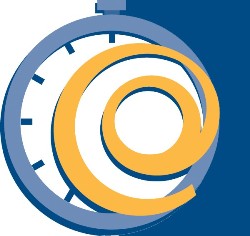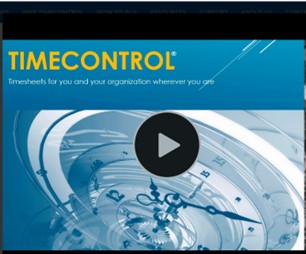













 -
-
The Release of their TimeControl 8.4 and the Addition of TimeControl Project, Leading to Growth for HMS Software
 Chris Vandersluis
Chris Vandersluis
President
HMS Software
Contact:
Chris Vandersluis
514-
Interview conducted by:
Lynn Fosse, Senior Editor
CEOCFO Magazine
Published – July 17, 2023
 CEOCFO: Mr. Vandersluis, it has been about a year since we have spoken, what are the highlights of the last year at HMS Software?
CEOCFO: Mr. Vandersluis, it has been about a year since we have spoken, what are the highlights of the last year at HMS Software?
Mr. Vandersluis: It has been a big year for HMS Software. If I look at the software side, we made a major release of our TimeControl enterprise timesheet service and software early in 2022 and another major release, TimeControl 8.4 just a few weeks ago. Also, we released a new addition to our TimeControl product called TimeControl Project which was a big evolution for us and we have shifted some of our focus into that product line.
If I look at the 2022 financial year, our intention was to have a flat stabilizing year after huge growth in 2021 and we accomplished that. We knew we had a shift from some clients from our on-
2023 has started great for us and has continued to go well. We have net new clients; growth of existing clients and we’ve been able to keep and take care of our staff amid quite a lot of changes in the technology industry. Our expansion of our core TimeControl service with new versions and editions has gone well and overall, we are on track for the plans that we set.
CEOCFO: Would you tell us about TimeControl 8.4?
Mr. Vandersluis: TimeControl 8.4 is our most recent release. TimeControl 8.4 includes some great new features and improvements. One of the most visible is in the way TimeControl data is displayed. Our whole dashboard for example was completely rewritten and made much more current and modern with a lot more decision-
The other changes were in the TimeControl Project area. TimeControl Project is a premium edition of TimeControl Online, our software as a service subscription we first released TimeControl Project back in 2022. New changes include more expanded Views and ability to move data between Views more easily.
CEOCFO: Let's take both of those items and go into more detail. What have you learned in general and what have you learned from your customers that you have incorporated in the newer versions?
Mr. Vandersluis: When we first got started as a software publisher, we created TimeControl as a multi-
We have developed so much depth in corporate timesheets and project costing controls since we first started with TimeControl in 1994, that our understanding of how to manage historic time, is vast. Now we have decided to shift our attention somewhat. Our clients asked us saying, “You are so strong in managing project actual time, what about managing plans and planned time?”
There has always been some planning functionality in TimeControl, but we decided two years ago to put in a lot more effort and create something called TimeControl Project, which is one of the additions to TimeControl, and allows people to now start making plans at different levels of the organization. People at the corporate executive level have some interest in plans but their interest is not in writing a bar chart or looking at an individual task, they are thinking more strategically. So we wrote tools such as integrated spreadsheet views for them. The project managers are still there but they need something where they are looking over the next few months and the rest of this year to figure out what plans are for our people and the project we need to complete. So we wrote separate tools like bar charts for them. At the tactical level, we want tools that will allow people to have task-
What have we learned from our clients? I can sum that up in a single word: flexibility. Ensuring that all parts of the product continue to expand on how flexible they are while maintaining our auditable architecture is a core part of our vision. One thing that we did in TimeControl some time ago was to create an API, which is an Application Programming Interface that allows other products to tie into TimeControl either to push data in or pull data out in a programming fashion. We found a number of our clients have said the API capability has been a key feature for them. We now have these integrations coming from tools that we may not have ever seen. Because TimeControl is so flexible and so open to having data move in and out in a controlled auditable process, our clients can do the things they need to do and support the internal prosses that they need to support. TimeControl itself always going to get more functionality but our focus for expansion has been TimeControl Project and programming functionality for clients to be able to integrate into their corporate systems and corporate processes.
CEOCFO: Has newer technology come along which has made it easier for you to add these features, or is it more the realization that people indeed want them?
Mr. Vandersluis: We get both. There are always changes to the technology to which we integrate, that includes platform changes. Most of our business is SaaS. The platforms that we use such as Amazon or Oracle and Microsoft databases, change, so there is always work to do on that side. Some of that does make it easier for us and some of it is just effort that we have to accept we will have to do to make sure we keep up.
We are also very client-
CEOCFO: How do you encourage client feedback?
Mr. Vandersluis: Our clients don’t usually need a lot of encouragement to give us feedback. We talk to all of our clients all the time and if they have suggestions or concerns, we hear about them and address them right away. Part of our business process is to make sure we are calling them even if they are not calling us, just to check in and see how it is going. Sometimes clients will hold back on making a particular request because things are working for them, but when we ask, they will give us a couple of ideas and features or improvements they would not mind seeing.
CEOCFO: What has changed with TimeControl 8.4?
Mr. Vandersluis: In the product itself, we have added new functionality for integration with other tools. We did some extensions to the way that we integrate with Innate, which is one of the many tools we work with. We did changes to the linking with Microsoft Project to improve performance there and with Oracle's Primavera. All of those are things that we wanted and that are important to us. That was key. The most visible change is the new dashboard display, and virtually every user with seeing that. We have not only made the new dashboard display nicer, easier, and more flexible; we have made it more extensible so that it can be longer than just what fits inside the screen.
We have added a whole lot of display data. Some users might see company announcements and the status of their timesheet, which might be the only important thing. Other users will perhaps see a pie chart of where they are spending their time or a list of upcoming tasks. The dashboard can be customized for every user. All of that has been well-
Then there are a whole range of improvements. There is the free TimeControl Mobile App, and we spent a great deal of time there getting the underlying infrastructure up to date, and adding new functionality there including things like Dark Mode and better performance. We have had to make changes for some products going out of use. For example, Microsoft is no longer supporting Internet Explorer. So we finally had to say we were moving on from Internet Explorer to the new Microsoft Edge browser, as well as support in having to update all the time for other browsers like Firefox and Chrome, Safari and so on.
CEOCFO: Would you tell us about your long relationship with Oracle?
Mr. Vandersluis: We have a long-
Weirdly enough, in 2008 Oracle would buy Primavera and all of these multiple relationships that we had on the Primavera side were now Oracle relationships, so the Oracle relationships doubled both in terms of points of contact and the products that we link to. We very much value that relationship. This delivers big dividends to our mutual clients. When they say they are using Oracle Primavera on an Oracle database and they have it on-
We have the same thing with Microsoft. We started the Microsoft relationship in 1995 because we wanted to link to Microsoft Project. Two years later when we were creating a version of TimeControl to work on SQL databases, we also linked to Microsoft SQL Server. That relationship has continued to evolve for almost 30 years. We are now making integrations with Office 365, and are linked to Project Online and Project for the Web, and Project Desktop, as well as SQL Server and other Microsoft products like Dynamics. With Microsoft also we have relationships where we have multiple points of contact at both the technical and marketing levels. Clients might call and say they are thinking about Project Online and TimeControl, and we understand the technology on their side and how it is deployed and promoted. With things that we have already supported, we have that partner track for being able to do technical support for new upgrades and updates that they put in as well.
CEOCFO: You mentioned keeping all your people on, but are you finding the same problems that many other companies have in attracting new talent that are the right fit for HMS?
Mr. Vandersluis: Yes, I think every technology company is having some issue with talent management. That was all thrown into a spin because of COVID. So many companies including our own shut down their offices in 2020, and many people started working from home. Some companies have gone back completely on-
I am keen to have our people stay together. We are currently working on a hybrid basis, working one day a week in the office in person, some people are working two days in the office, and the rest of the time optionally at home. That means that people we consider hiring have to be close enough to our Montreal office to get to it. That might reduce the pool of talent but I think the end result is worth it. If we were to shift to offshore talent, the effect is a major change in the culture of our business. I’m committed to keep our people together.
CEOCFO: Is international business growing for you and how do you reach out in that direction?
Mr. Vandersluis: The world is quite small these days because of the Internet, of course, so prospective clients often find us whether we directly market to them or not but our marketing has never been targeted just to the US or Canada. We tend to do a lot of business in the UK. We are doing business with in the UK, in France, and in South America. We have clients in Asia and all over Europe. The extend of our client base is one reason why the business is as strong as it has been.
CEOCFO: Why choose HMS?
Mr. Vandersluis: I think the strength of HMS is our depth. We have been doing what we are doing for a very long time. We understand the processes that go behind a timesheet. Any developer can create a timesheet screen in a few hours if asked, and it will always kind of look the same. It will be some kind of a grid where people will type in time entries, and then the timesheet will be saved.
That’s not the important part of a timesheet. What’s key is what comes afterward when payroll, billing, project management, the tax department, the CFO, and others want to see what happens to that data in very particular and very different ways. We understand the functionality of that of course because we understand our product, but our strength and the reason HMS has done so well is because we understand the business processes behind that screen.
HMS Software | Chris Vandersluis | Enterprise Timesheet | Project Timesheet | Project Management Software, Enterprise Timesheet Company, The Release of their TimeControl 8.4 and the Addition of TimeControl Project, Leading to Growth for HMS Software | CEO Interviews 2022 | Business Solutions Companies | Government Services Companies | Industrial Company | Global Company | primavera timesheet | timesheet, project management, saas, enterprise project management, timekeeping, timesheet service, timesheet software, HMS Software Press Releases, News, Twitter, Facebook, Linkedin, Youtub